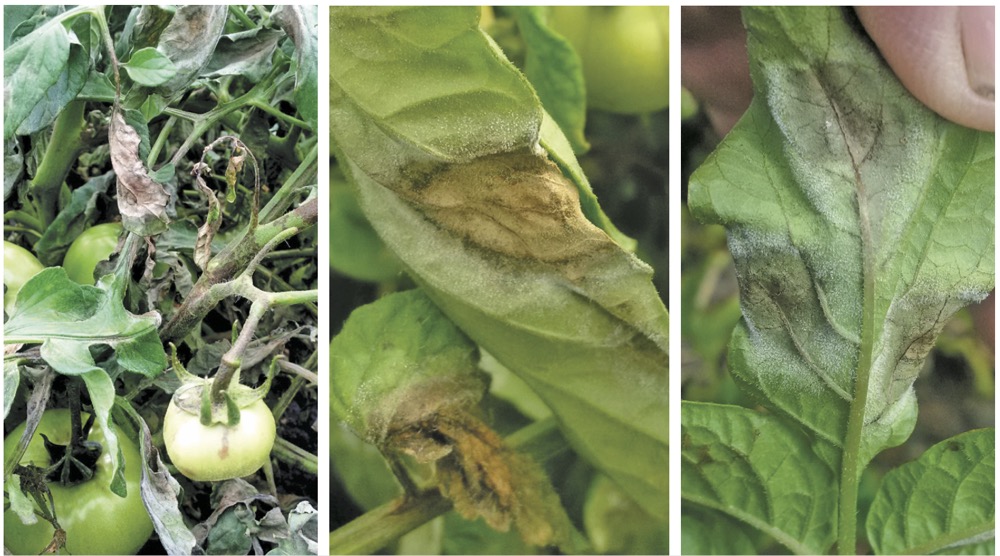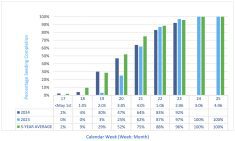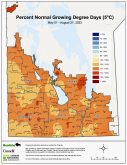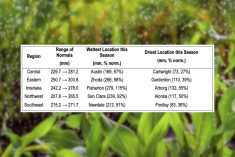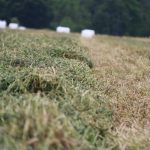Commercial potato growers, market gardeners and home gardeners were hit hard by late blight last year, but there are steps to take to avoid a repeat in 2017, say Manitoba Agriculture staff.
The key is managing for the fungal disease before it becomes a serious problem.
The precautions to take range from choosing tomato varieties resistant to late blight, to knowing how to spot the disease’s first signs and notifying neighbours and authorities right away, says farm production extension pathologist Vikram Bisht.
Late blight was first detected in a potato field near Carberry July 16 last year and by early August more than a dozen fields in the area were infected. Had commercial potato growers not applied fungicides to protect their crops, it’s estimated anywhere from 75 to 80 per cent of this province’s potato crop could have been infected too.
Read Also

Manitoba trials work toward drone spraying approvals
Canada’s PMRA says pesticides need drone-specific labels before drone spraying can take off; Manitoba crop trials are adding data towards that approvals process.
The same fungus is a source of infection for both tomatoes and potatoes. Home gardeners certainly lost their crops last year, but it was market gardeners who were hit especially hard as the disease spread.
“The fungus we had last year, or the strain, was extremely virulent or aggressive on tomatoes,” said Bisht.
The pattern of infection in Manitoba shows late blight is spread by the fungus’s spores travelling by wind during intense thunderstorms. It tends to show up on the west side of the province and then within five or six weeks has travelled easterly across Manitoba.
To avoid its spread, the most important thing growers of both tomatoes and potatoes can do is familiarize with the early signs of it, and then be on watch for it, in both home gardens and fields, Bisht said.
Symptoms can appear on the plant’s leaves, stems and fruits, said Bisht. Under high humidity or after rains, the infection would show on leaves as brown lesions, sometimes with light-coloured margins and on the underside powdery appearance on the infected areas.
Stem infections are dark brown and can be one cm to five to 10 cm long. These lesions on stems would also show powdery appearance under high humidity.
Any plants suspected of being infected should be sent for diagnosis to MAFRD’s Crop Diagnostic Lab (at 545 University Crescent, Winnipeg, Man.) or turned over to a local MAFRD GO office.
There are precautions growers can take to avoid that spread of the disease too.
Weeds like nightshade and volunteers in last year’s fields, or in potato cull piles can also start the disease.
In potatoes the highly infected tubers will rot in the field itself, but those with low infection get carried into storage when they can’t be graded out.
“Those are the ones that become the source of problem for the next year, if they are seed crop,” says Bisht.
Another source of infection can develop if growers throw culls into a pile expecting them to rot down. Those piles can withstand very cold temperatures through winter and in spring plants may emerge from them, potentially becoming another source for the infection.
One of the critical things all growers can do is share information with neighbours so everyone can take steps to keep it from spreading if it is detected anywhere.
“Since the disease spreads like an epidemic it is important that we all share the information that there is late blight around,” Bisht says.
Other preventive strategies include ensuring tomato seedlings bought from greenhouse growers are healthy to begin with or by purchasing tomato seed only from reputable local suppliers.
There are several late blight-resistant tomato variety options for home growers to choose from, including both hybrids and heirloom varieties, said Bisht.
Hybrids include Defiant, Plum Regal, Mountain Magic, Mountain Merit, Iron Lady and Jasper tomato.
Resistant heirloom tomato cultivars include Lemon Drop, Matt’s Wild Cherry, and Mr. Stripey (Tigerella).
Growers can also keep abreast of where late blight has been detected, and where it may be spreading by checking a regularly updated provincial forecast throughout the growing season. Manitoba Agriculture twice weekly updates the forecast, found on its website at mbpotatoes.ca.
More information about late blight and managing to prevent it is found on MAFRD’s website at: https://www.gov.mb.ca/agriculture/crops/plant-diseases/late-blight-disease-mgmt.html.


